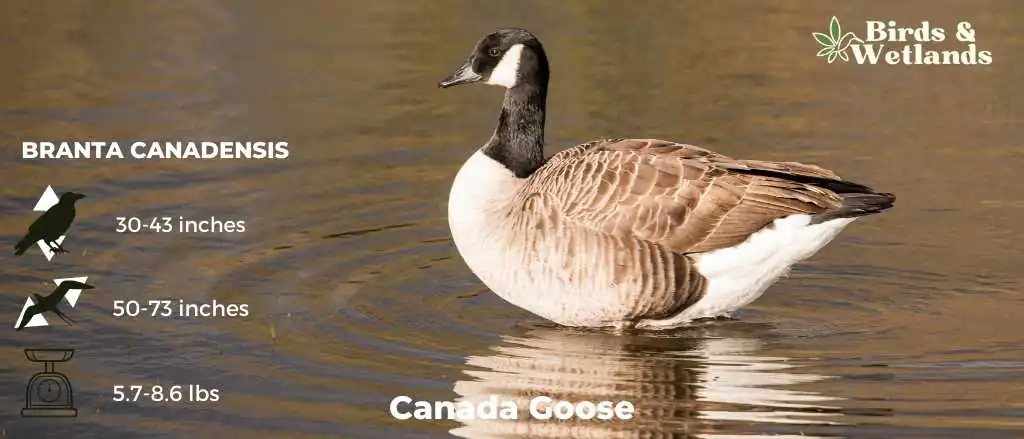There are many different subspecies of Canada goose. These include:
Atlantic Canada goose (B. c. canadensis)
Giant Canada goose (B. c. maxima)
Vancouver Canada goose (B. c. fulva)
Interior Canada goose (B. c. interior)
Moffitt’s Canada goose (B. c. moffitti)
Dusky Canada goose (B. c. occidentalis)
Lesser Canada goose (B. c. parvipes)
Learning about the different subspecies of Canada geese is a fun way to learn more about these fascinating birds!
General Description
Giant Canada goose
Giant Canada geese (Branta canadensis maxima) are known for their large size. With an average weight of 5 kg, these birds are significantly larger than other Canada geese subspecies. They are found throughout central and northern United States, from the Great Plains to as far north as Alaska. This goose is a rare winter visitor in Washington state. They also live in central Manitoba.
The giant Canada goose subspecies was once believed to be extinct. However, a small flock was discovered wintering in Rochester, Minnesota, by Harold Hanson of the Illinois Natural History Survey in 1962. Fortunately, these geese made a remarkable comeback and have since been thriving in their native habitats.
While giant Canada geese and Moffitt’s Canada geese may look similar, several key identifiers can help you tell these two subspecies apart. For starters, the call of the giant Canada goose is typically lower and deeper, while the bill-to-body size ratio of the giant goose is much larger.
Additionally, the black neck feathers of a giant goose start much farther up the neck than other variants, and its cheek patch extends down to its lower bill. A less reliable but widely-recognized identifier is that a giant goose often has a very large white forehead and eyebrows, which are not always present in Moffitt’s geese.
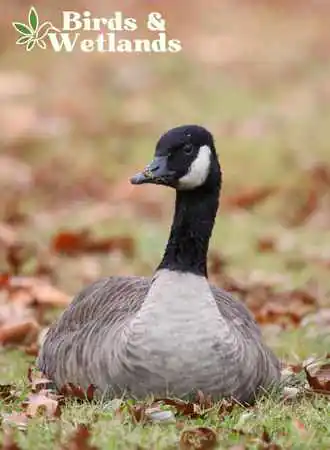
Atlantic Canada goose
Atlantic Canada geese are an extremely common sight all along the east coast of North America, but they can also be found in other parts of the continent and even in parts of Europe.
Due to their large size and voracious appetite for grasses, Atlantics have been viewed by some as a nuisance species, with many people calling for them to be trapped or killed.
The Atlantic Canada goose is a medium-sized waterfowl species with thick and dense feathers that help keep it warm during cold winter. It has a grey chest that fades gradually into light brown on the wings and flanks, giving it a distinctive mottled appearance.
In addition, the Canada goose has an elongated neck and a long, slender bill for foraging for aquatic plants in shallow areas of lakes and ponds.
Vancouver Canada goose
Vancouver Canada geese (Branta canadensis fulva) are a Canada goose species found in western British Columbia and southern Alaska. This particular type of goose is characterized by its dark warm brown chest and body, which is slightly paler than that of other Canada geese.
In addition, this Canada goose stands out due to its use of trees as perching and nesting sites during the breeding season. Unlike many geese, this subspecies nests primarily in dense temperate rainforests, usually situated around 9 meters off the ground in tree snags.
Interior Canada goose
Interior Canada geese (Branta canadensis interior) are a subspecies of the larger and more familiar Canada goose. These geese are notable for their distinctive appearance, which includes a medium grey breast, a black head and neck, and white cheek patches.
Both males and females share this same appearance, although males tend to be slightly larger than females.
Interior Canada geese can be found in both southern Canada and the southern United States, where they spend the winter months. During these colder months, these geese typically breed in northern Quebec, Ontario, Manitoba, and the Hudson Bay area.
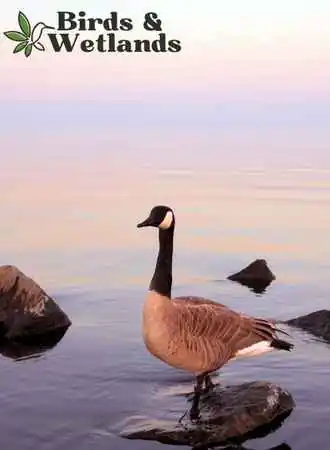
Moffitt’s Canada goose
The Moffitt’s Canada goose (Branta canadensis moffitti), also known as the Western Canada goose or Great Basin Canada goose, is a subspecies of the larger and more commonly known Canada goose.
This iconic bird is native to western North America, specifically the large swath of mountainous territory surrounding the Rocky Mountains. Due to its wide range and adaptability, the Moffitt’s Canada goose’s population has continued to grow in recent years due to introductions in regions well outside its original range.
The Moffitt’s Canada goose is characterized by its long neck and bill, which is somewhat larger than that of other subspecies of Canada geese. In addition, this subspecies can also have small patches of white over its eyes or forehead – a trait more typically associated with the larger maxima geese.
Its plumage tends to be paler than many other species of Canadian geese but slightly darker than maxima, with a pale gray-brown body tone and whiteish underparts.
Dusky Canada goose
The dusky Canada goose (Branta canadensis occidentalis) is one of the most distinctive subspecies of the Canada goose. Its warm brown coloration on its body and chest sets it apart from other subspecies with its gray or buff coloring.
In addition to its distinctive coloration, this subspecies is also known for being one of the smallest populations of Canada geese in North America, with relatively few individuals inhabiting the Alaskan Copper River Delta and Middleton Island.
One key characteristic of dusky Canada geese is their wariness — they are more cautious than many other geese when searching for a place to land, typically flying low and inspecting potential areas before returning to the sky.
Additionally, dusky geese undergo molting from early July to early August, during which period birds may wait in sub-alpine lakes until they have grown their new feathers. These features make this particular subspecies unique within the larger context of different populations of Canadian geese.
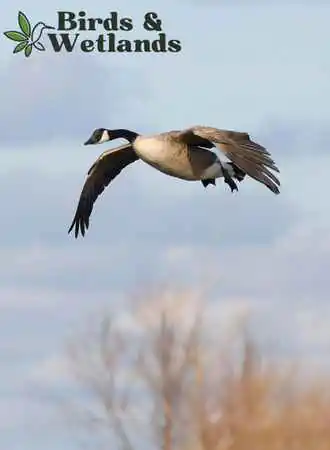
Lesser Canada goose
Lesser Canada geese (Branta canadensis parvipes) are medium-sized geese with a distinctive appearance. They have a medium grey breasts, with black on their neck and front of the head. Additionally, they have noticeable white cheek patches on either side of their face.
Interestingly, males and females look alike in coloration, making it easy to distinguish between sexes by looking at other physical characteristics such as size or shape instead.
Regarding habitat and range, lesser Canada geese are natural residents of central Alaska and eastward to Hudson Bay in Canada. Their range extends south to the prairie provinces in western Canada and across much of the United States throughout the winter months. They are considered to be a partly hybrid population.
Their wintering range includes the Pacific coast and around Washington State during the colder months and can be spotted throughout much of the year.
Cackling Goose
The cackling goose is not the same species as the Canada goose. In July 2004, the American Ornithologists’ Union’s Committee on Classification and Nomenclature split these two birds into separate species. The cackling goose is now recognized as its unique species with the scientific name Branta hutchinsii.
There are several reasons why this split was necessary. Perhaps most importantly, there are striking differences between the cackling goose and the Canada goose regarding physical appearance and behavior.
For example, while both geese have black necks and heads, the neck and head of a cackling goose (exclusive of Richardson’s cackling goose) are much smaller relative to its body size than that of a Canada goose. Additionally, cackling geese tend to migrate earlier in the year and generally prefer more open habitats than Canada geese do.
Despite these clear distinctions between cackling geese and Canada geese, there has been some debate about how to classify them. There is some overlap in the size range between types of Canada geese and individuals within the cackling goose subspecies, which can sometimes make identification challenging.
Furthermore, the Barnacle Goose is a descendant of the cackling goose lineage, whereas the Hawaiian Goose is an insular representative of the Canada Goose.
However, by taking into account their unique anatomical features and other behavioral patterns, such as migration times and habitat preferences, it is possible to distinguish these two species from one another accurately.
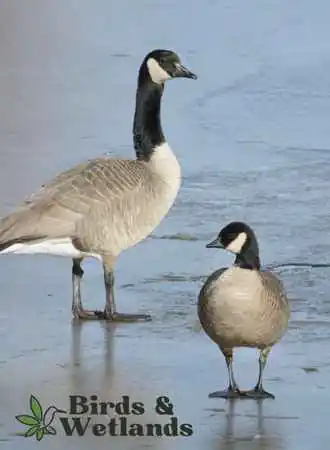
Habitat
Canada geese are well-adapted to a variety of different habitats. They thrive in both open and wooded areas, as well as along the edges of wetlands and around farm fields. These waterfowl can also navigate a wide range of climates, ranging from arid regions with little rainfall to temperate zones with more consistent precipitation.
What they seem to prefer above all else, however, is a food source that is rich in important nutrients, like grains, grasses, and insects. In other words, Canada geese (also known as the white-cheeked geese) seem to thrive when they can find the right balance between food and environmental factors like temperature and moisture levels. This is the reason why they are commonly found in city parks, golf courses and other urban areas.
Migration
Most Canada geese have staging or resting areas where they can meet up with others. You can see their autumn migration from September to the beginning of November when they fly from their breeding habitat.
Most northern populations are migratory while southern populations tend to be sedentary or non-migratory. During migration, it is normal to see Canada geese flying in the V formation, which helps the birds conserve energy by reducing wind resistance, allowing the flock to fly more quickly and further with less effort.
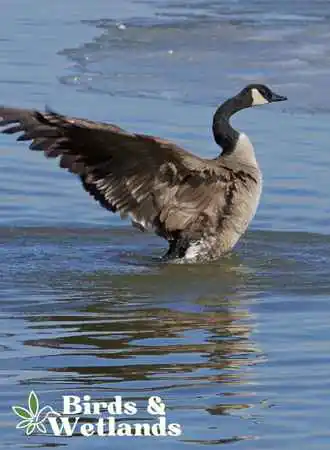
Diet
Most geese primarily feed on plant material, and it may vary depending on the time of year. During the spring and summer months, these birds typically eat a variety of grasses, aquatic plants, waste grain, berries, and seeds. In particular, they take advantage of large stands of common reeds or cattail along riverbanks and bodies of water.
During the fall, the diet of young and adult geese may shift slightly to include more grains like those in agricultural fields.
These North American birds are well equipped to forage for food across various habitats to meet their needs throughout the year. Whether grazing in a pasture or foraging in marshland, these iconic birds demonstrate their remarkable abilities as vegetarians and adaptable foragers.
Behavior & Reproduction
Canada geese are well known for their long migrations and nesting in colonies. When it comes to breeding, these geese generally begin laying eggs in early springtime after their spring migration, though this can vary depending on where they are located.
Most subspecies will form colonies and large flocks and build their nests on slightly elevated dry ground and near water sources, allowing the birds to have good visibility around them. However, these wild birds may also nest on cliff ledges, trees, or even on man-made structures like buildings and bridges.
Whether they choose natural or artificial nesting sites, the female chooses the nest site and builds the actual nest. This usually involves creating a shallow depression lined with sticks, grasses, weeds, and mosses lined with softer materials like feathers or down from her own body. Once completed, the nest serves as a safe space for incubating and protecting newly laid eggs until they hatch.
While the female incubates the eggs, the male stands guard nearby. The breeding pair will provide protection and food to their young. A few adults with their goslings will form groups called crèches.
Canada Geese find a mate during the second year of their lives.
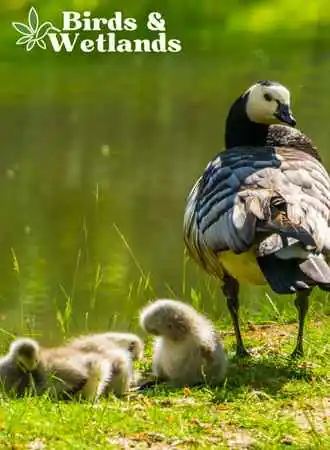
Conservation Status
With local populations estimated to be over 3 million across the country, several states and the United States Fish and Wildlife Service have established early Canada goose seasons aimed solely at reducing resident Canada geese populations. This population boom is primarily due to climate change, habitat recreation and few natural predators.
Key Points
There are seven subspecies of Canada geese.
All subspecies share the same habitat and food sources but vary in range.
The subspecies canadensis, interior, maxima, moffitti, parvipes, fulva and occidentalis) are collectively named Greater Canada Goose

